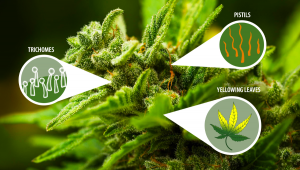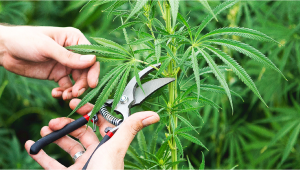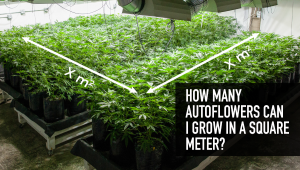Is it Safe to Defoliate Autoflowering Cannabis?
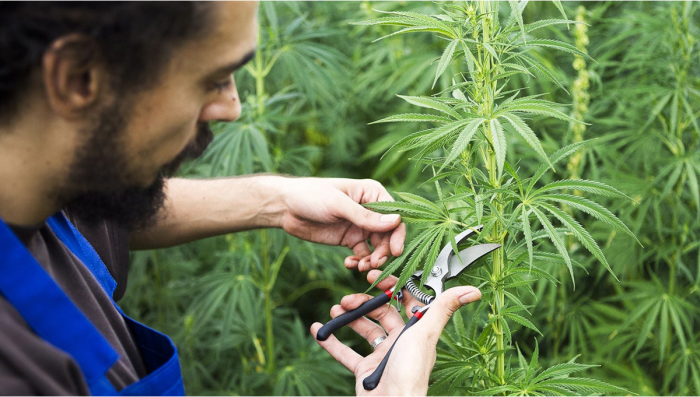
- 1. Is it safe to defoliate autoflowers?
- 2. Why defoliate autoflowers?
- 3. What is defoliation?
- 4. How to defoliate autoflowering cannabis?
- 5. Difference between topping and defoliating
- 6. Who shouldn’t defoliate autoflowers?
- 7. Expert opinion by jorge cervantes - co-author:
PREFACE
Welcome, dear readers, to a journey through the leaves and buds of autoflowering cannabis, with a particular focus on the art and science of defoliation. Fast Buds and Jorge Cervantes co-wrote this informative guide, which delves into the somewhat contentious practice of defoliation, particularly regarding cannabis autoflowering varieties. The article seeks to unravel the mysteries and provide clear insights into whether it is safe to defoliate autoflowering cannabis and, if so, how to do it effectively to enhance your yields without compromising the health and vitality of your plants.
Navigating through the lush foliage of cannabis cultivation, we explore the what, why, and how of defoliation, providing a detailed analysis of its potential benefits and risks, especially in the context of autoflowering strains. From a fundamental understanding of the role of leaves in plant health and bud development to their strategic removal to potentially enhance light penetration and air circulation, this guide illuminates a technique that has been the subject of much debate among cannabis cultivators. It seeks to give you the knowledge to make informed decisions and apply defoliation judiciously, should you choose to implement this technique in your own gardens.
In the world of cannabis cultivation, where every leaf and bud adds up, defoliation is not a technique to be applied lightly or without adequate knowledge and understanding. This guide addresses the common questions, concerns, and misconceptions surrounding defoliation in autoflowering cannabis, providing practical insights and expert advice to navigate through the leafy pathways of this cultivation technique. It aims to equip you with the knowledge to implement defoliation safely and effectively, ensuring that the technique enhances rather than hinders your cultivation endeavors.
Among the many techniques discovered by cannabis cultivators, defoliation is one that’s shrouded with mysteries. Is it safe to defoliate autoflowering cannabis? That is the question. But many don’t have an answer. Defoliation is nothing but a method to improve cannabis yields. Obviously, anyone growing cannabis wants to use several ways to maximize yields. Even beginners learn ways to do so. However, be warned that defoliation isn’t something everyone can do.
If you’re a beginner, stay away from trying this. Or, wait for a while until you’ve grown several batches of marijuana. Also, defoliation suits photoperiod plants where you remove many leaves while the plant is still in the vegetative stage. Those plants have enough time to grow back in full force and the grower switches the light cycle to the flowering stage only when the plants are strong enough.
But, as you may already know, things are a little different with autoflowers. They don’t rely on the season or light cycle to flower. They simply start flowering automatically once they reach a certain age. Thus, it’s normal to wonder if it is safe to defoliate autoflowering cannabis. Autoflowers don’t give you a lot of time to mess with them. Since they finish their growing and flowering cycle in 2-3 months, you need to be careful and consider if it’s worth it to defoliate the leaves.
1. Is it safe to defoliate autoflowers?
The short answer is – yes, it is. It is a risky technique, sure, but you can defoliate autoflowers as well. As long as you remember to remove leaves in the vegetative stage, you’ll do good. But, don’t even think of applying any technique in the flowering stage lest you want the plants to yield tiny amounts of cannabis.
2. Why defoliate autoflowers?
Good question. Why would you think of removing leaves to maximize yields? Especially autos? Well, you gotta do everything you can to get more buds. That’s the most straightforward answer you’d get. While some growers stay away from defoliating completely, others swear by the yields they get.
Defoliation seems counterintuitive at first, especially to novice growers. Cannabis fan leaves play a vital role in the health and growth of a plant. They are essentially biological solar panels. Their large surface area serves as a platform that houses chloroplasts—the photosynthetic organelles within leaf cells. But they do much more than convert light into sugars. Leaves also contain small pores called stomata that open and close depending on conditions. They help plants to breathe by taking in carbon dioxide and releasing oxygen. They also serve as a point of entry when applying foliar spray—a great way to quickly get nutrients inside a plant facing deficiencies.
So, with these factors in mind, why would a grower want to start hacking fan leaves off their autoflowering cannabis plant? Surely functional fan leaves are far too valuable to plant physiology to do away with them? While these parts of plant anatomy are crucial to help, defoliation can improve plant health and performance when done correctly.
First of all, removing the correct quantity of fan leaves helps with aeration—the movement of air around the canopy. Why is this important? Because mold, as a fungal pathogen, thrives in moist conditions with stagnant air. Removing a few fan leaves helps air currents move around bud sites, thereby reducing the chances of mold ruining your harvest.
But the benefits don’t stop there. Defoliation during the flowering stage also helps to deliver valuable water, nutrients, and sugars to the buds. Every fan leave requires a certain amount of resources to sustain it and keep it functional. Taking away the correct amount of fan leaves will free up nutrients coming in from the soil—including those important for flowering such as phosphorus and potassium.
There’s more! Cannabis inflorescences also require light. The sugar leaves and bracts contain photosynthetic cells. They also convert light into sugars and localize these valuable resources to the flowers themselves. However, although the fan leaves conduct photosynthesis, they sometimes overshadow the bud sites. Removing leaves that block light from reaching buds will help with flower formation and development.
3. What is defoliation?
In simple terms, defoliation is a method that involves removing the leaves of the plant. You start by removing the leaves of the lower nodes. Some growers defoliate the leaves and use other training methods like SOG as you can see in this picture. By doing this, you’re ensuring that the lower parts of the plant receive light as well. Also, you can’t remove too many leaves at once or you’ll make the plant weak.
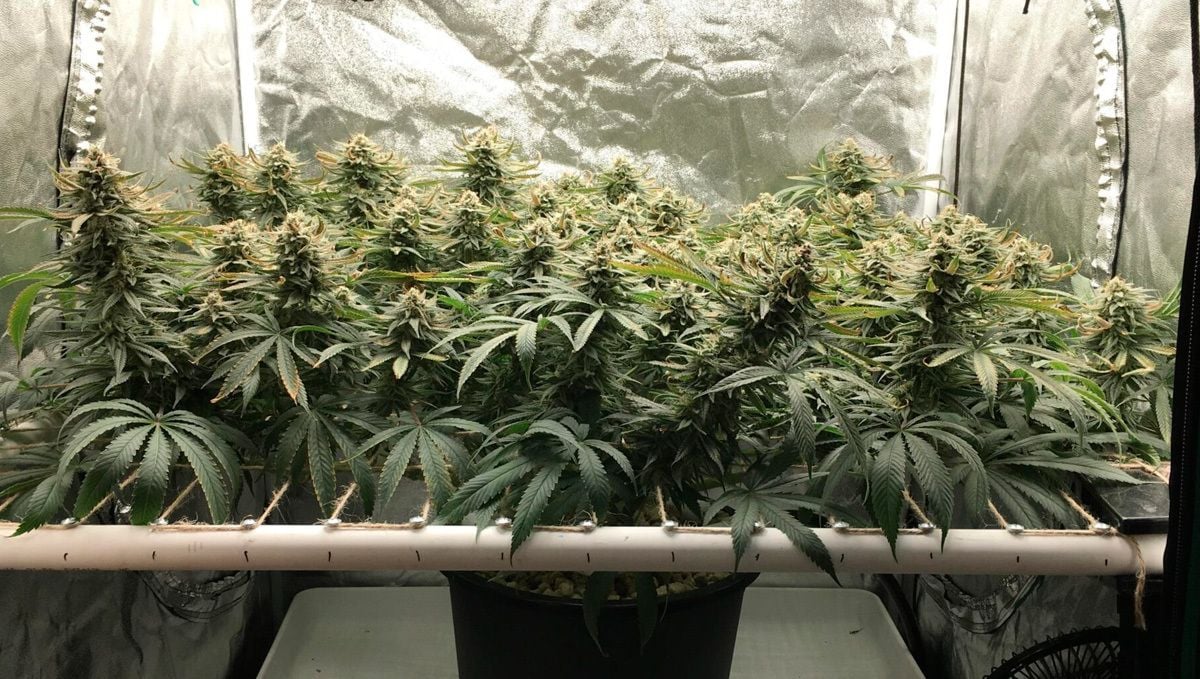
Instead, you remove a few older leaves of the lower nodes to force the plant to focus on buds located at the top of the plant. Some even refer to this technique as “lolipopping method” but it’s nothing but a process of stressing the plant to increase yields.
Note that this technique may not necessarily work if you’re growing cannabis organically outdoors. Due to pests and other factors, the plant is already under stress and it needs the fan leaves to store nutrients and help the plant grow. When you’re growing indoors, however, you’re constantly supplying all the nutrients the plant needs. The plant doesn’t feel the need to hold on to old leaves, and you’re just helping it by removing fan leaves.
Also, it’s not necessary to only remove fan leaves that are located at the lower nodes. The idea is to ensure that the canopy receives a uniform distribution of light. Thus, you can also remove leaves that are obstructing the growth of the buds situated down below. And, you do this even if they are at the top. Within a week, you’ll see that the buds at the bottom are going to get bigger. A uniform canopy does more wonders than you can imagine.
4. How to defoliate autoflowering cannabis?
You start with the lower leaves. Make sure you remove only a few leaves at a time. Do not stress the plant too much. Instead, remove leaves in such a way that all the parts get loads of light. Once the plant starts to feel the love, it will expand like anything. Although this sounds cliché, plants can actually feel your love! So, you begin with fan leaves that are ready to drop anyway. Even sick leaves can be removed so that the plant can focus on the healthy ones. Basically, you’re encouraging the branches to expand as much as possible. For instance, let’s imagine you removed a few fan leaves on Monday. Look for leaves obstructing bud growth again on Wednesday. Do not pick leaves repeatedly. We cannot stress this enough.
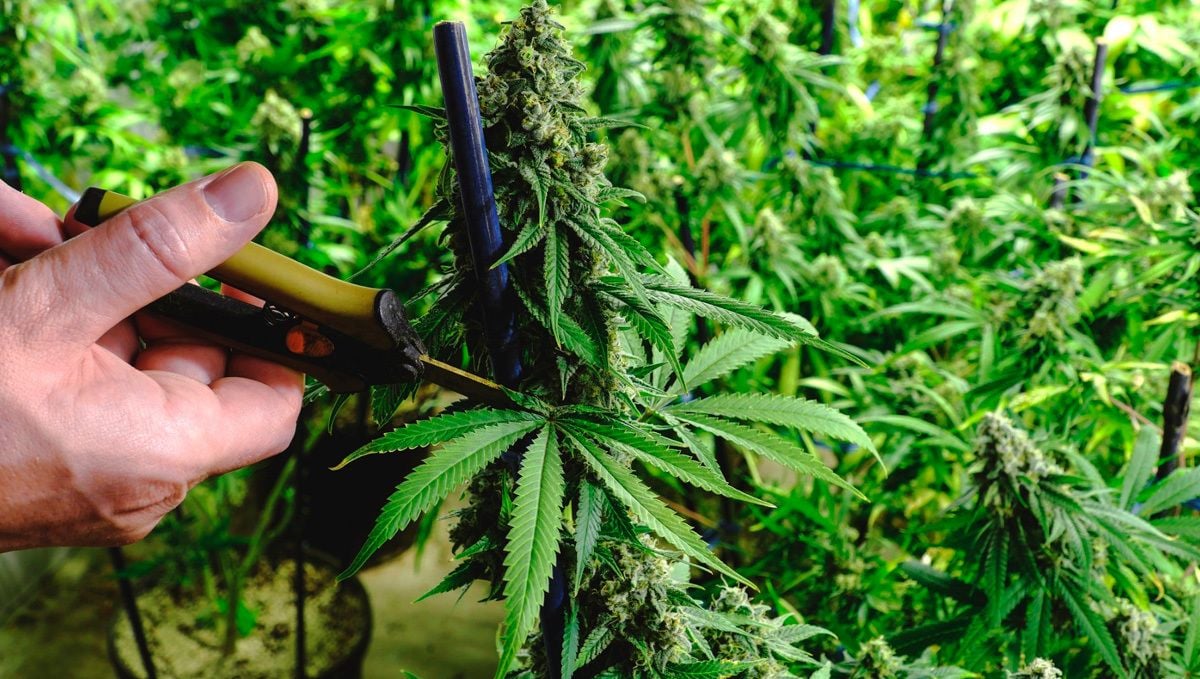
Now, you shift to upper nodes and remove small and big leaves that prevent light from reaching the lower nodes. You can also remove tiny buds that have no hope. These buds are called popcorn buds. By eliminating them, you’re making the plant focus more on buds that can actually grow into big monsters. Sure, it feels like you’re hurting the plant, but you’re not. Cannabis plants are super sturdy and it takes just a few days for them to recover even if they are autoflowers.
You’ve probably heard of pruning if you’re a gardener. Defoliation is very similar. The difference here is that you snip off leaves rather than pruning branches or roots. Yep, some experienced gardeners even prune roots, but we are not going to get into that topic here. A general rule of thumb that many experienced growers stick to is the 20% rule. Never prune more than 20% of the foliage at one time, and never more than once a week if you are taking that much off. This gives the plant time to bounce back from the stress it is placed under when defoliation takes place.
5. Difference between topping and defoliating
Since defoliating is also called a pruning tehcnique, many growers get confused. Topping is another technique where you prune the tips of the plant. And, again, you do that to encourage more buds. It’s a process that divides the main cola into several different colas. Many colas = many buds. As simple as that. Although topping is a pruning technique, it’s not the same as defoliation. With topping, you only cut off the tips whereas defoliation demands that you remove the fan leaves or any leaves obstructing light from reaching the bottom parts of the plant. And, just like topping is an amazing method for autoflowers to produce more yields, defoliation is also an excellent technique to get more buds. Both the methods are stressful for the plants, but the results prove that these simple techniques actually work with photoperiods anyway, but how about topping autoflowers? This is an age-old question, and it comes with a bunch of different answers depending on who you ask.
But one thing is for certain - topping is an advanced cultivation technique that should be reserved for growers who really know what they are doing, and who understand the specific strains that they are working with. We want to make this point very clear - THE VAST MAJORITY OF AUTOFLOWERING CANNABIS STRAINS WILL NOT PERFORM WELL WITH TOPPING. This is due to the simple fact that every time you top a plant, the growth will be stunted for at least a couple of days if not more. This is fine when working with photoperiodic strains, as when grown outdoors they have months’ worth of vegetative growth and when used with indoor cultivation you can keep them in veg for as long as you like. Autoflowering cannabis strains have an inbuilt genetic timer that will switch the growth stage from veg to flower at a specific time, no matter the lighting conditions.
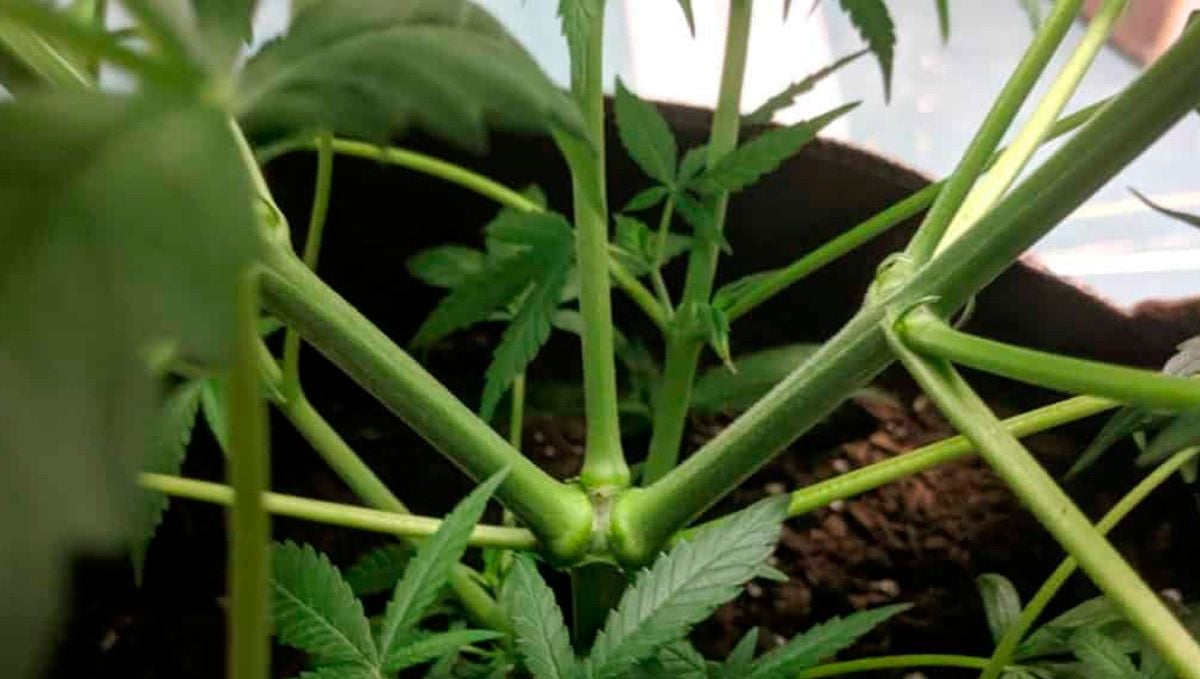
This means that most auto strains just do not have enough time to bounce back from being topped to make the technique worth it. This is true not just for topping, but for all HST (High-Stress Training) techniques and autos. Defoliation is one thing, with the stress levels of the plant staying at a reasonable level as long as you don’t go overboard. With topping, you are intentionally injuring the plant with the hopes of the regrowth being more fruitful. But with autos, there is just not enough time for this regrowth to take place before the flowering cycle begins. Now, as we said above, cultivators who are very experienced with autos and certain strains, in particular, may decide to try HST techniques. There are some auto strains that have long enough vegetative growth cycles to just sneak in a topping, but for the most part, it is advised to just stay clear of really hurting your auto plants. Treat them like the princesses that they are and you will be rewarded with the best buds possible!
6. Who shouldn’t defoliate autoflowers?
Anybody can defoliate their autoflowering cannabis plants, but there are some growers that should stay away. For one, if you’re a beginner, you shouldn’t try topping or defoliating. In fact, you shouldn’t try any technique until you’ve gained enough experience to do so. Many growers start with photoperiod plants. Later, depending on their needs, they shift to autoflowers. Yes, they are experienced with extensive knowledge about cannabis plants, but even they shouldn’t try to defoliate autoflowering cannabis on their very first go.
Why? Well, it’s because an autoflowering cannabis plant is a different beast. Right when you think you’ve figured it all out, it will behave completely differently and throw you off. You may have experience with photoperiod plants, but autos will teach you the importance of timing. For example, if you begin defoliating an autoflowering cannabis plant just before it starts to flower or when it’s flowering, you cannot expect the plant to perform according to your high expectations. Also, autoflowering cannabis growing outdoors is defoliated and maintained differently. So, keep in mind that this article is for those growing autos indoors. Defoliating may seem intimidating, but once you succeed with a few plants, you’ll actually realize that it’s a piece of cake!
7. Expert Opinion by Jorge Cervantes - Co-Author:
Embarking on the exploration of defoliation in autoflowering cannabis is a journey that intertwines the art and science of cultivation. Having spent decades delving into the myriad aspects of cannabis cultivation, I, Jorge Cervantes, find the topic of defoliation, especially in autoflowers, to be one of intriguing complexity and noteworthy discussion. Defoliation is not merely a physical act of removing leaves; it's a strategic approach that, when applied with understanding and caution, can potentially enhance the vitality and yield of your cannabis plants. And, I must admit, my opinion on defoliation has changed during the past few years.
In autoflowering cannabis, where the growth cycle is inherently short and the plants do not have the luxury of recovering from stress, defoliation must be approached with a delicate hand and a well-tuned understanding of plant physiology. The leaves, the primary sites of photosynthesis and respiratory exchange, play a crucial role in the plant’s growth and bud development. Strategic defoliation seeks to enhance light penetration and air circulation, but it must be done judiciously to ensure that the benefits outweigh the stress imposed on the plants.
Navigating through the leafy pathways of defoliation requires a balance of knowledge, experience, and intuition. Understanding the how and why behind each leaf removed is imperative, ensuring that the practice enhances rather than hinders the plant’s development and yield. Remember, each leaf removed is a source of lost photosynthetic power; thus, the decision to defoliate must be made carefully, considering and respecting the plant’s inherent growth processes.
In conclusion, as you traverse through the foliage of your autoflowering cannabis, embrace the knowledge, apply it with a gentle and caring hand, and observe carefully as your plants respond to the leaves removed. And remember, once a leaf is removed, you can’t put it back. May your cultivation journey be enriched with lush buds and vibrant growth, reflecting the wisdom and expertise applied to each leaf’s departure. Happy growing, dear cultivators, and may your leaves and buds flourish in the light of knowledge and care.







